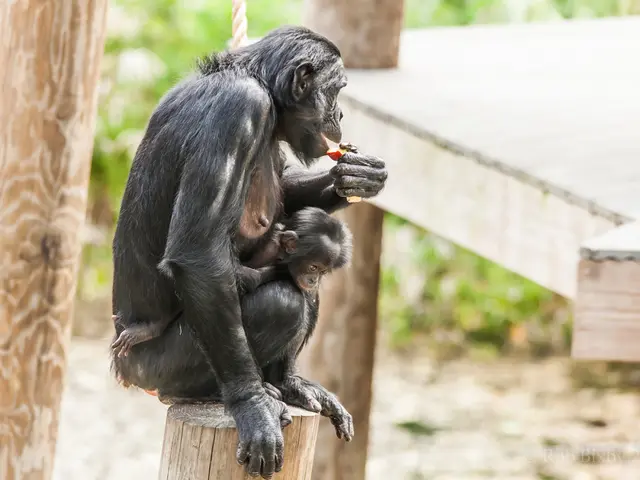Urgent collaboration essential for promoting long-lasting development and combating polarizing international politics
Southeast Asia is grappling with a US$1.5 trillion deficit to fund its net-zero targets, a consequence of exponential growth in energy demand. To address this challenge, ASEAN member states are collaborating to bridge funding gaps and meet the 2030 Sustainable Development Goals (SDGs) deadline through strategic approaches centred on sustainable finance, green energy, regional energy integration, and climate adaptation efforts.
Sustainable Finance and Funding Mechanisms
ASEAN is exploring blended finance models that combine public and private funds to overcome the low-return nature of many climate adaptation projects, attracting investment even when direct financial returns are limited. Development banks, such as the Asian Development Bank (ADB), are mobilizing large-scale investment programs, like ADB's $40 billion commitment by 2030 for sustainable sectors, including agri-food systems. This demonstrates pathways to leverage public-private partnerships and innovative financial vehicles, such as the Natural Capital Fund.
Strengthening capital markets and enforcing strong corporate governance can build investor confidence and enable sustainable long-term investments essential for green energy and climate projects. Universities and research institutions in the region are emerging as catalysts for sustainable finance, bridging research with investment strategies to fill financing gaps, notably in countries like Indonesia.
Green Energy Transition and Regional Energy Integration
ASEAN aims to achieve 23% renewable energy in primary energy supply by 2025, with countries like Singapore, Malaysia, and Vietnam targeting carbon neutrality by 2050. Regional energy integration can optimize renewable energy resource sharing and grid stability across member states, enhancing energy security and efficiency amid surging demand, projected to increase by 60% by 2040. Developing carbon pricing mechanisms, such as carbon taxes and emission trading systems, can create unified incentives for emissions reductions and cooperation through market-based approaches.
Climate Adaptation and Nature-Based Solutions (NbS)
ASEAN countries have significant potential for Nature-Based Solutions (NbS), leveraging approximately 30% of the world's NbS potential in forests, coastal wetlands, and marine ecosystems, which also function as large carbon sinks. Investment in NbS projects, such as forest restoration, mangrove conservation, and sustainable agriculture, can generate carbon credits, financially rewarding climate-positive outcomes and biodiversity preservation. A regional framework like MARS could guide adaptation project identification and prioritize financing, providing a toolkit for assessing technologies and directing funds efficiently toward adaptation solutions.
In summary, collaboration across ASEAN to bridge funding gaps via blended finance, coordinate carbon market development, advance clean energy integration, and scale Nature-Based Solutions can create a robust, interconnected approach to achieve net-zero and SDGs by 2030. These efforts require unified governance, shared infrastructure investments, and mobilization of private sector and institutional actors underpinned by strong research and policy support.
The conference "Unlocking Capital for Sustainability," held in Kuala Lumpur on 28th July, aimed to foster inclusive and sustainable growth for ASEAN and discuss actionable initiatives to unlock finance for sustainable development needs. The event, an annual flagship event organized by our website in partnership with the United Nations Environmental Programme Finance Initiative (UNEP FI), covered critical issues including geopolitics, transition finance, artificial intelligence, energy transition, and climate adaptation and resilience. The conference hosted an exclusive training workshop, "Unlocking strategic value through climate disclosures," on 29th July.
[1] ADB (2021). Asian Development Bank. Retrieved from https://www.adb.org/
[2] ASEAN (2021). ASEAN. Retrieved from https://asean.org/
[3] UNEP FI (2021). United Nations Environmental Programme Finance Initiative. Retrieved from https://www.unepfi.org/
[4] WRI (2021). World Resources Institute. Retrieved from https://www.wri.org/
[5] IUCN (2021). International Union for Conservation of Nature. Retrieved from https://www.iucn.org/
- ASEAN is embracing blended finance, merging public and private funds, to overcome the low-return nature of climate adaptation projects.
- The Asian Development Bank (ADB) has committed $40 billion by 2030 for sustainable sectors, including agri-food systems.
- Strong corporate governance and robust capital markets can boost investor confidence, facilitating long-term sustainable investments.
- Universities and research institutions play a critical role in connecting research with investment strategies to fill financing gaps, particularly in countries like Indonesia.
- ASEAN aims to achieve 23% renewable energy in primary energy supply by 2025, with key countries targeting carbon neutrality by 2050.
- Regional energy integration can optimize renewable energy resource sharing and grid stability, increasing energy security and efficiency amid surging demand.
- Developing carbon pricing mechanisms, such as carbon taxes and emission trading systems, can unify incentives for emissions reductions and cooperation.
- ASEAN countries have significant potential for Nature-Based Solutions (NbS), leveraging approximately 30% of the world's NbS potential in forests, wetlands, and marine ecosystems.
- Investments in NbS projects, like forest restoration, mangrove conservation, and sustainable agriculture, can generate carbon credits and financially reward climate-positive outcomes.
- A regional framework like MARS can help identify and prioritize financing for adaptation projects, providing a toolkit for assessing technologies.
- The "Unlocking Capital for Sustainability" conference, held in Kuala Lumpur, aimed to encourage sustainable growth for ASEAN and explore actionable initiatives to unlock finance for sustainable development needs.
- The conference covered critical issues such as geopolitics, transition finance, artificial intelligence, energy transition, and climate adaptation and resilience.
- A training workshop, "Unlocking strategic value through climate disclosures," was held on 29th July during the conference to help participants understand the importance of climate disclosures in business and personal-finance decisions.




